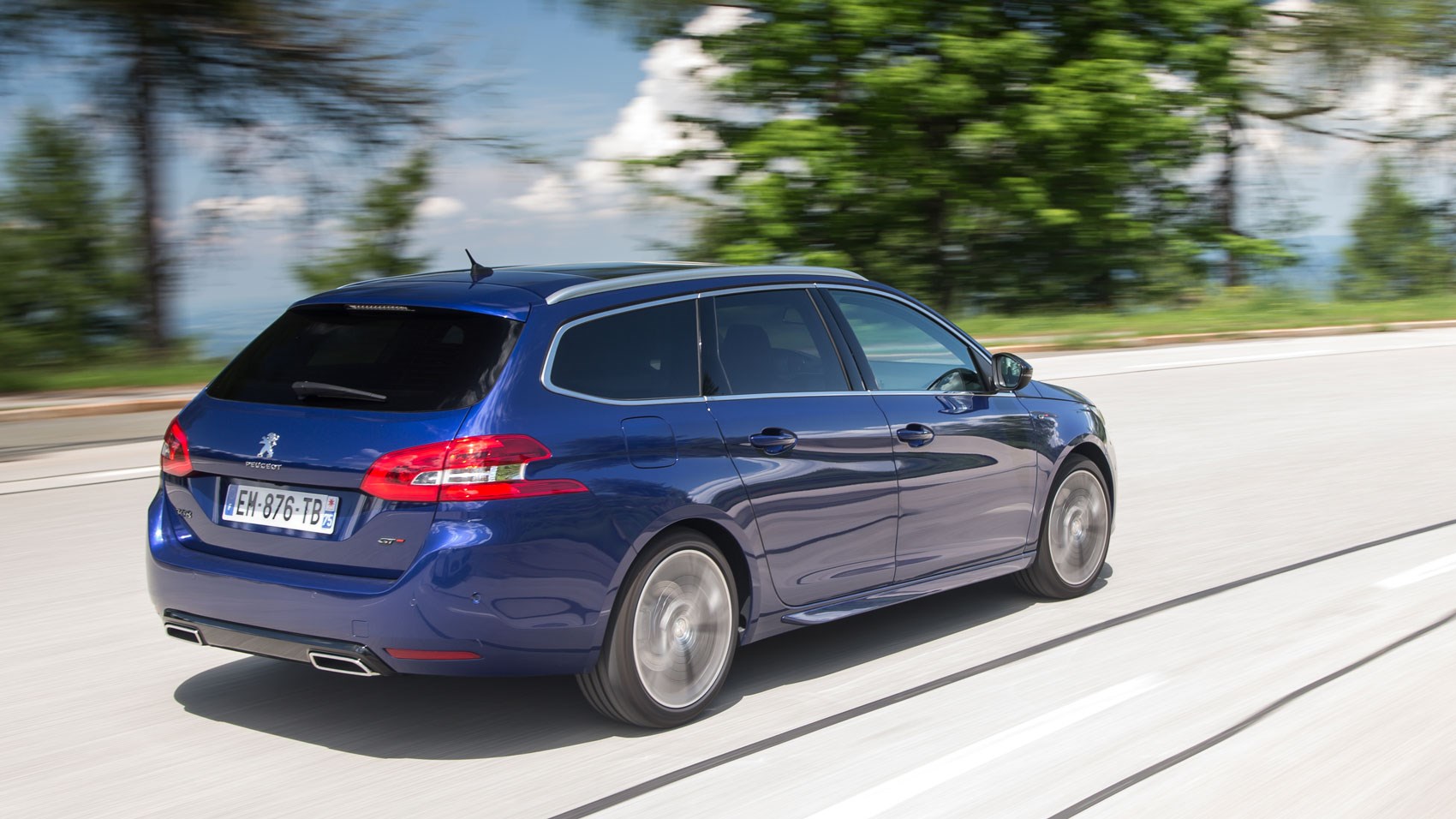► Peuegot 308 SW estate review
► Style and kit updated in 2017
► One of the biggest boots out there
Okay, perhaps the Peugeot 308 SW estate is not a dramatically significant car in the overall automotive world, but it’s of some personal significance for me, because it’s the first car I reviewed for CAR, from its original launch in 2014.
If you’re reading this, it’s probably a car that’s of at least some interest to you too, in which case you might like to know that it’s recently been updated, in the second half of 2017.
An opportune time, then, to revisit the Peugeot 308 estate and see what’s what.
So, what’s new?
This isn’t what you’d call a giant restyle; it’s all pretty subtle. ‘Claw effect’ tail lights are now standard on the outside, and the headlights have been gently redesigned. The bumpers at both ends have been rejigged too, to more closely resemble the 308’s big-brother Peugeot 3008 SUV. Oh, and there are some new seat fabrics on the inside.
An updated infotainment system for the 9.7-inch touchscreen is housed within the same modernist, minimally buttoned dashboard as before. It’s aged well, and still looks fresh. I’m not convinced grouping as many functions as possible, including the air-con, within various touchscreen menus is the best option for road safety but accept that it allows for some interesting interior surfaces. There aren’t many other C-segment cars out there with an interior like this.
The titchy steering wheel still sits below the high-mounted instrument binnacle, and feels less of a shock than it did a few years ago.
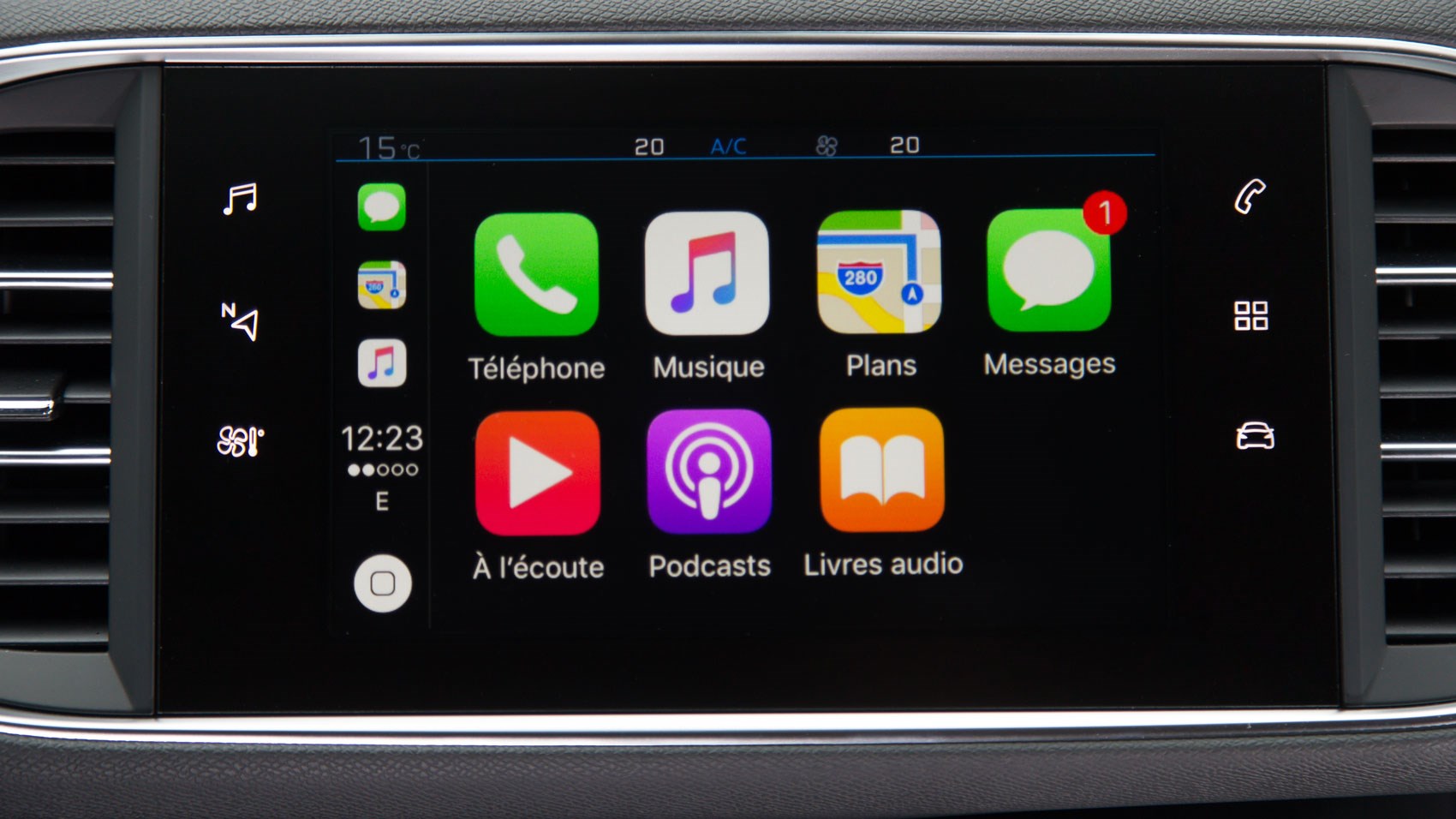
That new multimedia system includes a Mirror Screen function for smartphones, which bundles Apple CarPlay, Android Auto and Mirrorlink, so its fluent in various smartphone species and can map some of their functions onto the dashboard’s touchscreen.
Updated active safety tech includes speed limit recognition (which was wrong-footed by a couple of signs near our offices) and active blind spot monitoring.
Anything else?
Some new hardware under the bonnet, depending on which version you buy; the three-cylinder PureTech petrol engine has a new six-speed manual gearbox, and a new 128bhp 1.5-litre BlueHDi four-cylinder diesel is now available.
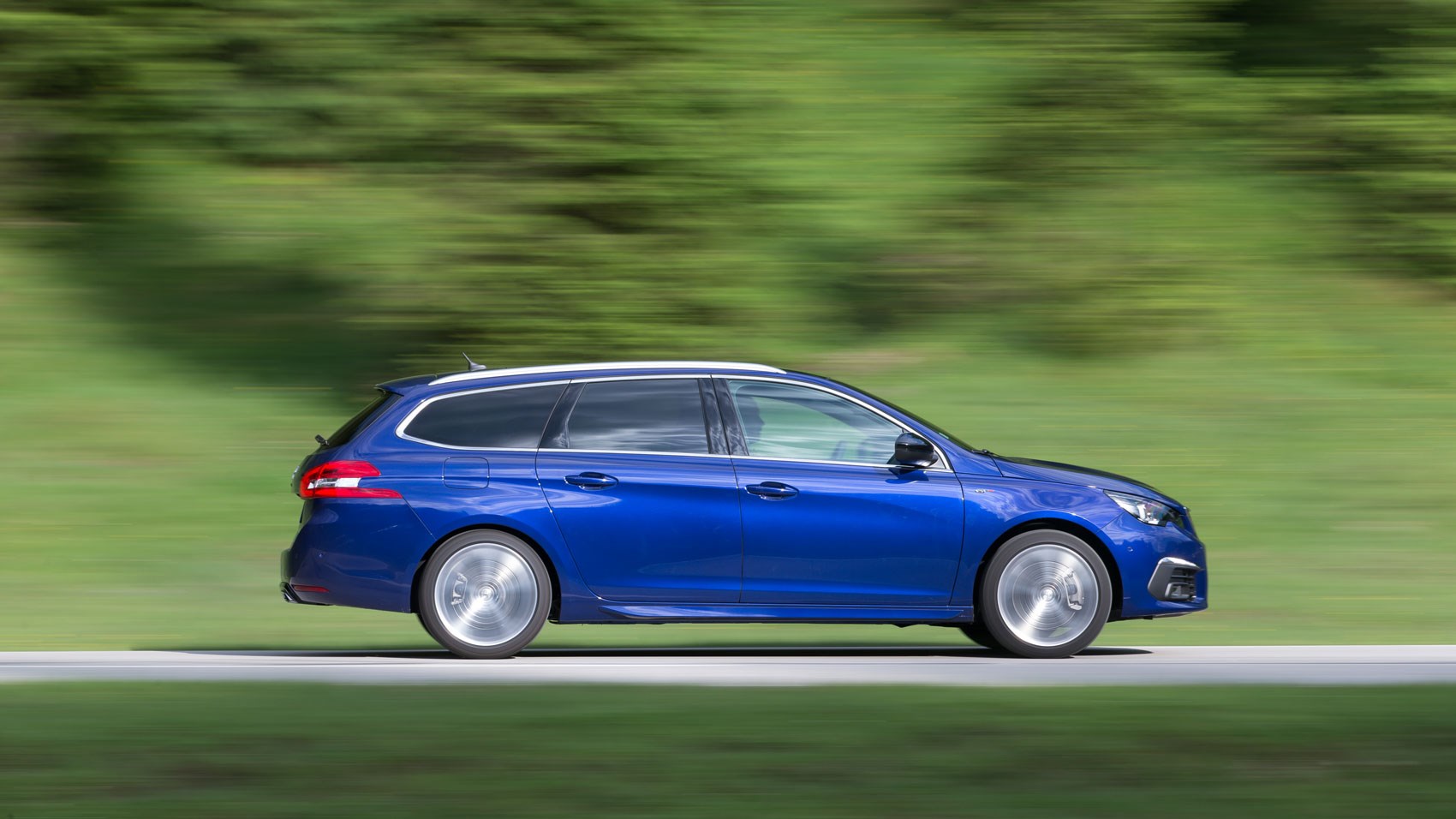
The top 2.0-litre BlueHDi 150 diesel engine now has an eight-speed auto transmission option – we’re testing that engine here, but with the regular six-speed manual gearbox.
Which trim’s being tested here?
This a GT Line – some of the appearance of the GTI, without the performance. So, racy-looing 18-in wheels with a rippled finish to the spokes, chunkier bumpers and sills, more serious-looking exhaust tips (even if it does just have a diesel engine under the bonnet) and plenty of aluminium, leather and red stitching inside.
It might be a GT in cosmetic terms only, but this car does handle very tidily, and with 273lb ft of torque on tap, gets a move on smartly enough. It feels quicker than its on-paper performance figures suggest (0-62mph in 9.2sec).
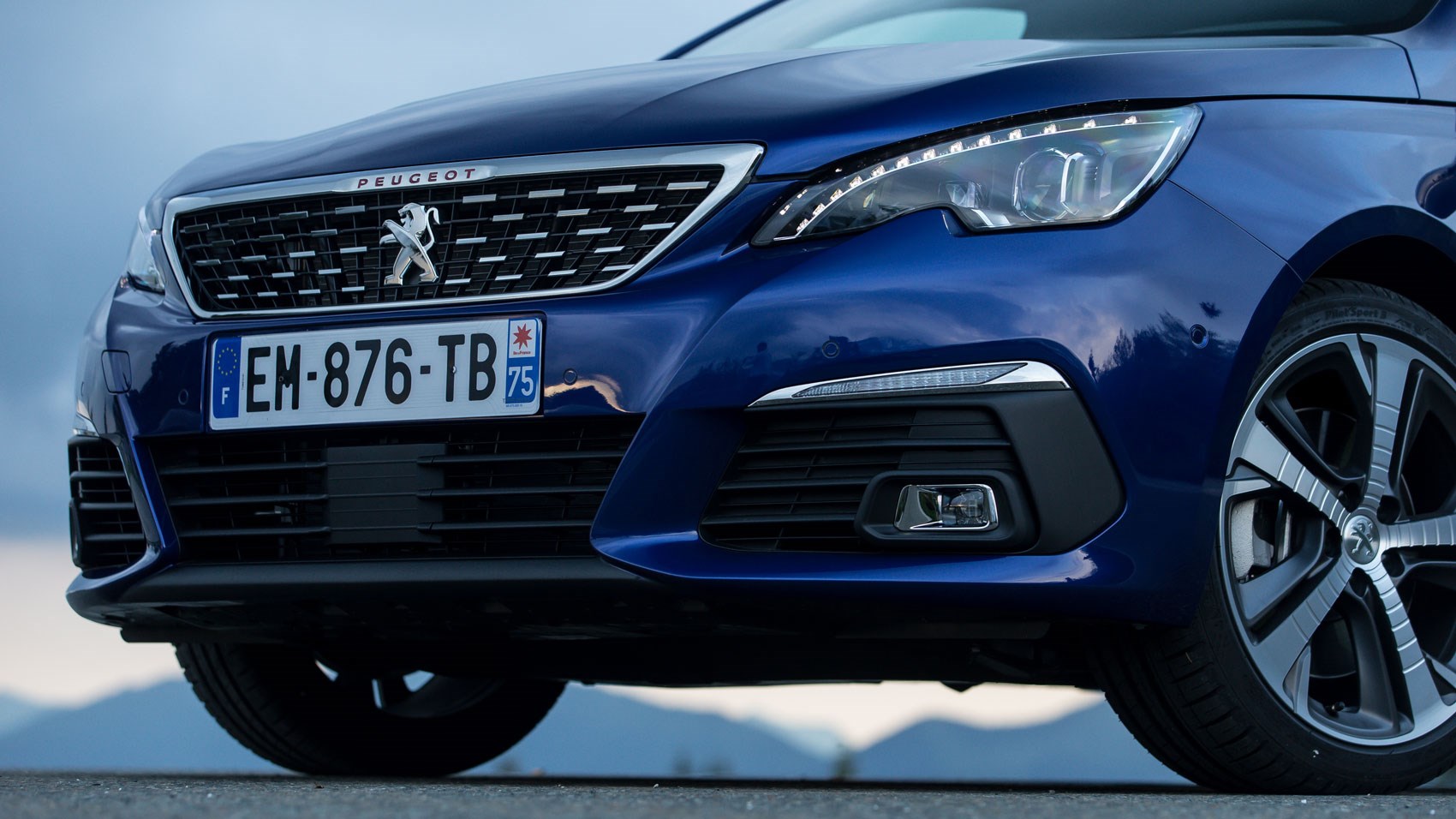
Said torque is delivered more smoothly than smaller PSA diesel-engined vehicles I’ve driven, where the motherload arrives in a big glut in the middle, with nothing but lag below – this is a much more progressive engine, and reasonably refined too.
Our drive of the facelifted 2017 Peugeot 308 GTI
The manual gearbox features a weighty clutch (with characteristically awkwardly angled pedals) and a knuckly-feeling but short-ish throw and user-friendly shift. The gearlever has a metal top which is frostbite-freezing in winter.
The large-ish wheels make for a bit of patter in the ride on unevenly surfaced roads, but primary ride over larger bumps is very comfortable. It’s a comfy car all-round, helped by seats with plump cushions, like a favourite armchair.
What do you get as standard on the GT Line?
Apart from all the cosmetic bits, there are full LED headlights and foglights and scrolling front indicators, plus all the kit you get on the Allure trim below, namely front and rear parking sensors, and a giant glass roof – a panoramic roof that actually deserves the name.
The stereo sounds great although it occasionally re-re-winds digital radio stations, replaying the last second or two of speech or a song, an odd quirk shared with our Citroen C3 long-termer as it swaps from FM to DAB frequencies.
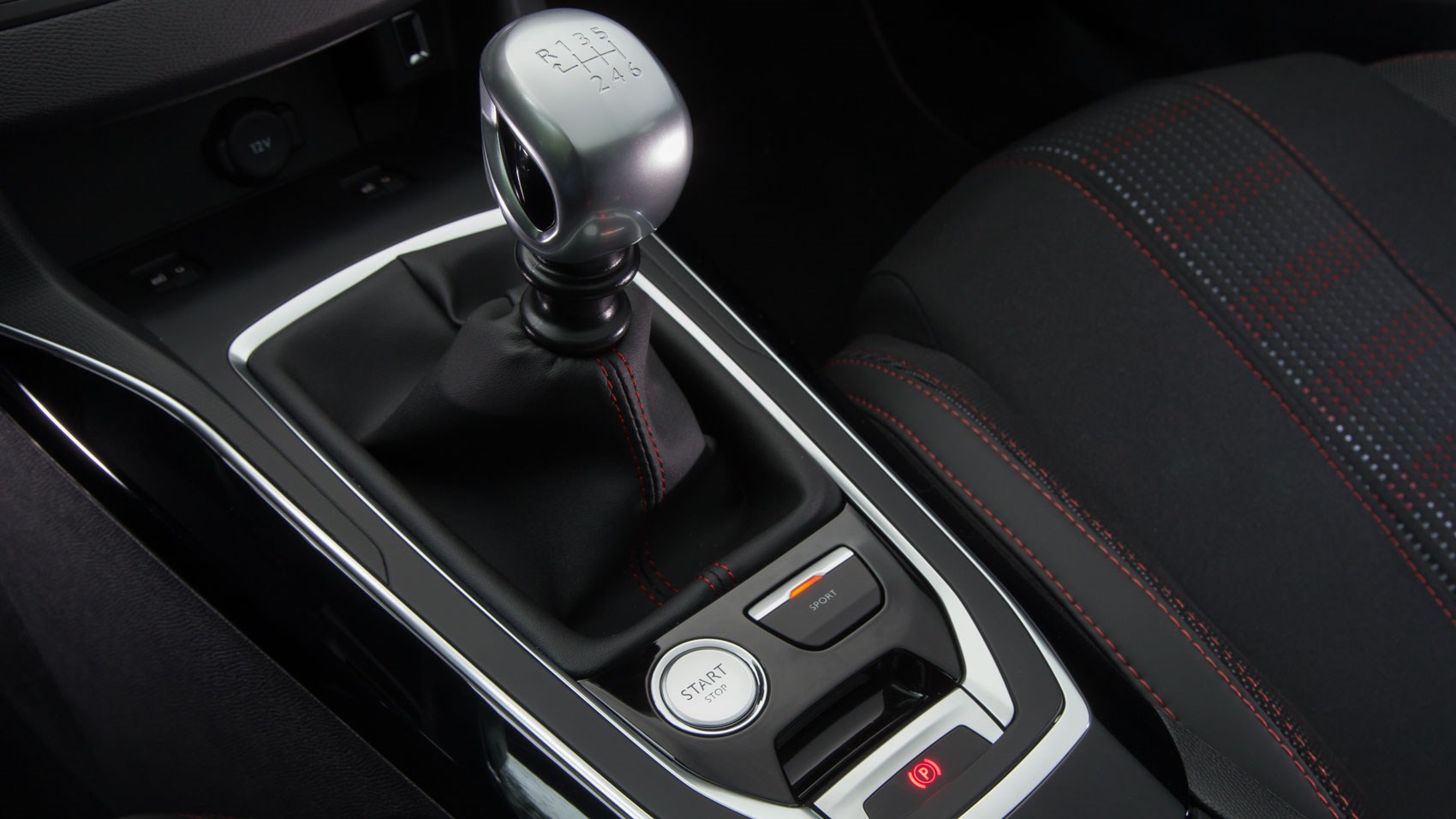
An option worth avoiding is the Sport mode switch, which turns the dials entirely red (so you can’t see where the redline is, the one time you’re probably more likely to get near it), makes the steering unnecessarily heavy and pipes some artificial warble through the speakers to enhance the engine note. A useless gimmick, and a button you’ll probably press once and then never use again.
What’s it like as an estate car?
If you’re looking for space, the 308 is still the most capacious estate in its class. In fact, the boot is so big this feels more like a car from the class above.
The wheelbase is a whole 110mm longer than the 308 hatch and it’s 332mm longer overall – much of that coming from the generous rear overhang that creates a very long load deck and a genuinely big boot.
There’s 660 litres of space with the seats up and 1775 litres seats-down – more than a Skoda Octavia, the other space king in the segment (610/1740 litres). The 60:40 split rear seats fold flat, and have a load-through hatch in the middle.
The roll-up luggage cover/parcel shelf can be stowed neatly under the boot floor, and rails along the boot floor feature sliding anchor points.
What other rivals should I be thinking about?
From the VW Group there’s the Seat Leon ST (small-ish but still very practical), VW Golf Estate (a bit bigger, slightly posher interior) and Skoda Octavia Estate (bigger still, less posh interior).
Hyundai builds the excellent but dull i30 Tourer, Ford the ageing and not-that-spacious but still good Focus Estate, Vauxhall the actually-pretty-good Astra Tourer and Toyota the deathly dull Auris Touring Sports. The handsome but average Renault Megane Tourer is another key rival, too.
Verdict
Biggest boot of the bunch, and the rest of the car’s not bad either.
There’s still much to like about the 308; it has a genuinely distinctive interior (marred by the awkward touchscreen), dynamics biased towards comfort make it a great motorway cruiser but its chassis is adept enough on B-roads too, and it has so much luggage space it feels almost like a car from the size class above.
It’s not the cheapest of cars; the range kicks off from below £20k, but this GT Line BlueHDi 150 test car weighed in above £25k; but it remains one that should be on most compact estate buyers’ shortlists.
Check out our Peugeot reviews
